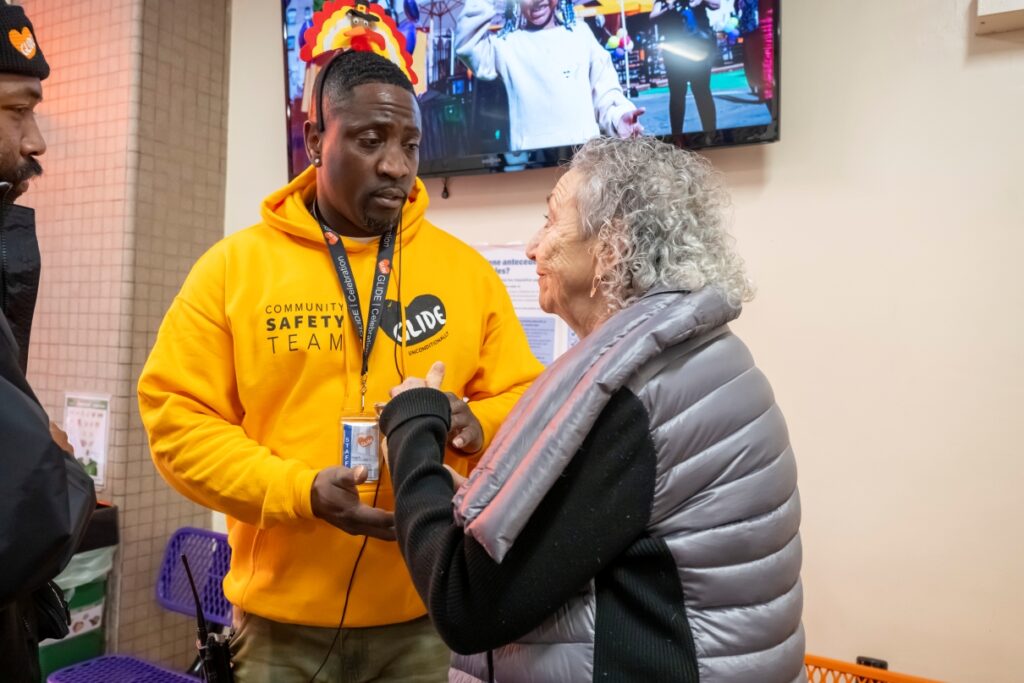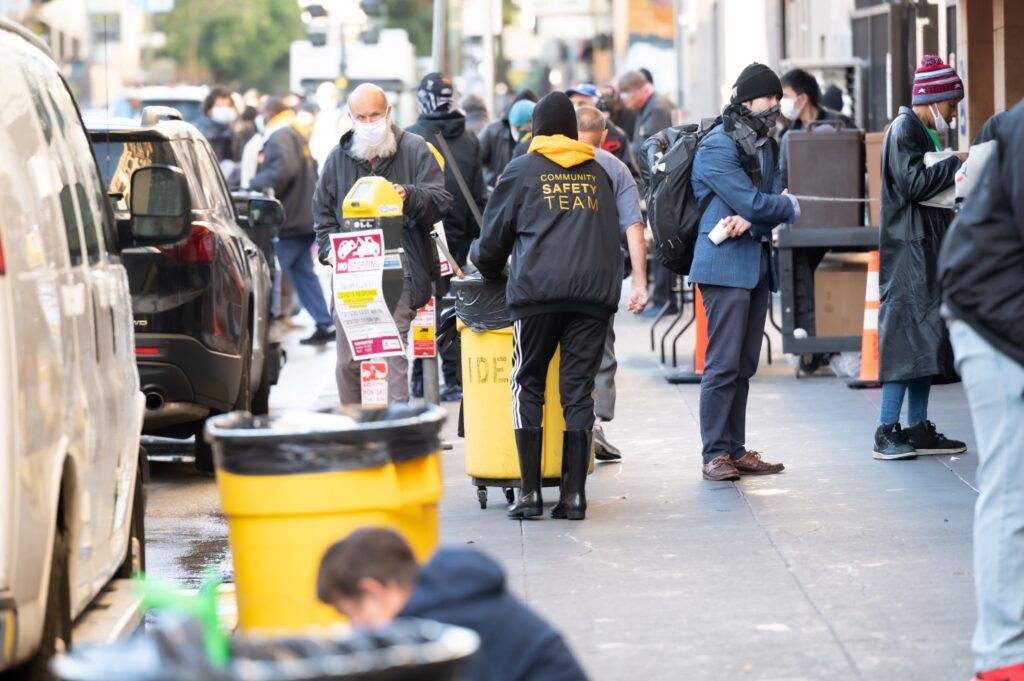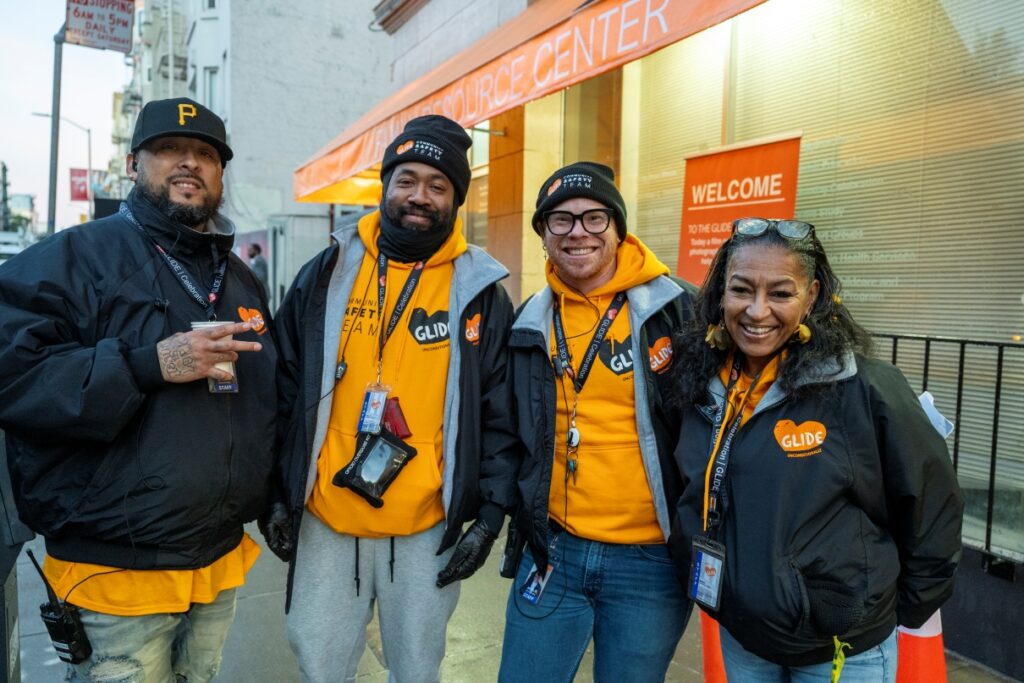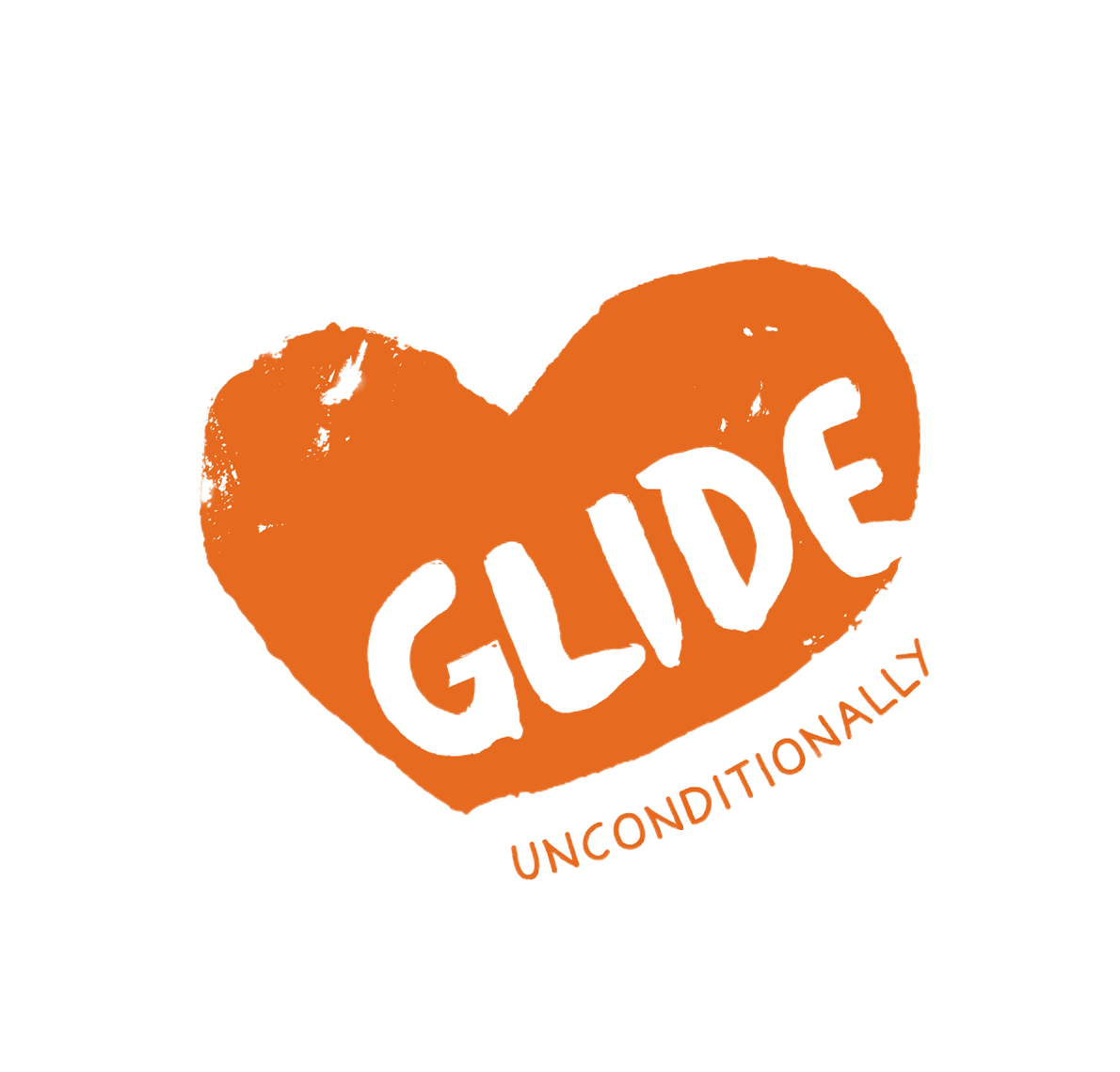
Social Service Providers As Pioneers in Transformative and Restorative Justice
Restorative and transformative justice are ways of dealing with harm that focus on healing instead of punishment. Our mainstream justice system is frequently punitive, which can trap people in cycles where they repeat their mistakes instead of transforming their lives.
When service providers like GLIDE respond to infractions of rules by clients in a way that’s grounded in grace and community care, they light a way forward to a better world– one where everyone has the opportunity to grow from second chances.
What is restorative justice?
Restorative justice is about bringing people together—those who were hurt and those who caused harm—to talk honestly, take responsibility, and try to make things right.
What is transformative justice?
Transformative justice looks even deeper and asks, what needs to change in our community or society so this kind of harm doesn’t keep happening?
What is GLIDE’s Return to Care Program?
Every social service provider has clients who break the rules. People experiencing extreme poverty are under all kinds of physical and mental stress, and often have mental health problems or understandable difficulties with emotional regulation. GLIDE’s values of radical inclusion and unconditional love deeply inform the way we approach rule-breakers. We interviewed Lando Del Rio, our Community Safety and Training Assistant Manager, to get deeper insight into how our approach works day-today.
“Our clients come to us with a variety of complex situations: but we know them, we talk to them, we have a rapport with them. We code-switch with them and meet them where they’re at. We don’t use inaccessible professional language if we know they won’t understand it; we talk to them in the same way that talks to us.”
This includes hiring staff of many different backgrounds and trying to learn phrases of your client’s languages. “It’s about cultural competency and interpersonal skills,” Lando adds. “You need to have a great memory for names and faces.”
It’s easier to de-escalate someone who’s upset or breaking the rules if you have a pre-established relationship or call them by their name. Our community safety team members have a wide range of safety-related skills in addition to de-escalation: training in first aid, CPR, narcan administration, and mental health first aid.

What governments can learn from social service nonprofits
“City leaders should approach unhoused people like people: like individuals,” says Lando. He shared his discomfort with the tactics that sometimes get used in encampment sweeps across the country: “Unhoused people are treated like animals sometimes: kicking them out, rushing them, grabbing their belongings. That’s not the way we do things in the morning. Of course, people camp on our doorstep overnight, after closing hours.”
“When it comes to morning time, we have a system. Our announcements often include a friendly ‘Good morning!’ or ‘Top of the morning, everyone!’ gently signaling that it’s time to rise and shine. If they don’t hear that, we will individually greet them, and politely let them know it’s time to start gathering their things. We give them time. They’re regulars, they know the system. They know we’re going to come out there and greet them and be nice to them, so they’re okay with being woken up– they know breakfast is coming soon.”
“Every now and then, we’ll have a couple of issues in the morning, maybe because we woke them up after we just got to sleep. In those cases, we just give them a few minutes. If cities approached unhoused people with that kindness and humanity, we’d be in a better place. No one should ever talk to unhoused people like they are in the way. They’re just trying to live; they’re trying to get by.”
Transformative justice in action
One core tenant of the philosophy of our Return to Care Program is that someone’s actions don’t define who they are. When people make mistakes, our priority is still ensuring they are never lost to care. We hire staff who are formerly unhoused, formerly incarcerated. So many people at GLIDE understand on a deep level what it’s like to be on the streets and making unwise decisions. They know better than anyone– the person you are today, isn’t the person you have to be tomorrow.
A committee of safety and program staff meets every Thursday to discuss incident reports from the week and choose a way to handle each situation individually. Often the solution is a cool-down period, the length of the cool-down period depending on the severity of the rules infraction. We also consider whether it’s a repeat or a first-time infraction. No one is ever kicked out of GLIDE forever; it’s against our values. But often, a cool-down period to reconsider can help a person be restored to their community.
We still feed them during their cool down period; we give them a to-go meal and ask them to eat it outside the building. And we have a conversation with them about why the decision was made to institute the cool-down period. Usually, they’re very very understanding about it. They generally understand they’ve done something wrong and feel the consequence is fair.
Justice means solving root causes, not just punishing behaviors
“Sometimes when people get into fights inside the building, they’re continuing conflicts that have been occuring outside the building,” Lando explained. “People have lots of personal drama. They’re in survival mode. I get it. We have to put ourselves in their shoes so we can respond with compassion– and also be clear with them about what we won’t tolerate at GLIDE. I don’t always agree with the choices and actions people take, but I keep on reminding myself, I’m not them, I haven’t gone through what they’ve endured.”
The most important thing, more important than imposing consequences, is attempting to solve the underlying issue causing the behavioral issues. For example, a client who’s underlying problem is dementia doesn’t need a cool-off period, they need medical assistance. Our Safety Team might problem-solve that situation by doing handoffs to the client’s caseworkers, or particular cases can be handled by a licensed clinician on GLIDE’s staff.
Compassionate problem-solving in complex situations is what our safety team does– their work is so much more advanced and intensive than that of a “security” worker. Ensuring the safety of people is much more labor-intensive and vital than ensuring the safety of property– and much more important!
What to do when restorative justice doesn’t work at first
On the rare occasions when our restorative justice conversations don’t go well, and people don’t appear to understand the gravity of what they’ve done, the Return to Care committee discusses the next steps and strategy as a group, considering many factors, including the urgency of the care.
People who are on a timeout from Meals Service are still welcome to see their health access workers at the Health Hub beside the building, so no one is ever removed from care entirely. We will also sometimes bring their services to the sidewalk and see if we can help them there. That way they can be cared for without negatively impacting others trying to enjoy services within the building. Our first priority is always the safety of everyone, including staff!
Violence and physical restraints are not necessary to ensure safety
We have a Hands Off Policy which is rare among social services agencies– meaning that our staff is never allowed to lay hands on a client to physically restrain them– not even if the client is initiating a fight. This policy increases the overall safety of staff. The policy helps people feel safe– it makes them more relaxed and less inclined to escalate in the first place.
A safety staff is different from a security staff: we remove ourselves from violent situations instead of trying to “vanquish” the “enemy.” In a world of unconditional love, no one is an enemy. There are some situations where calling 9-11 is called for, but it’s neve a first resort!
Using these policies, we’ve been able to keep our guests safe. Lando says, “We’ve found that even after a withdrawal, most individuals show significant improvement in their attitudes and behaviors. While we do occasionally see repeat offenders, the overall trend is positive change.”
De-escalation tips
Gwen McDade, our Community Safety and Training Manager, is fond of telling staff she trains, “Do not match their energy. If they’re at 100, we stay at 50.” We can’t outdo an escalated client when it comes to energy, so we use calm and teamwork to handle the situation.
Our Safety Team also does tag-in and tag-out. Lando says, “If I am having a confrontation and it’s not going well, someone else will be like ‘I got this,’ and I will leave.” Basically, sometimes clients get triggered because a particular person rubs them the wrong way– so switching out can de-escalate. We also always respect a client’s bubble and make sure they don’t feel crowded. Crowding someone can escalate them. They will feel threatened if five people are all crowded around them!
The most important de-escalation tactic, Lando says with great conviction, is LISTENING. “You don’t want them to feel scared or defensive, so we do lots of listening, we say, ‘Let me hear your side of the story.’ We offer them help, we ask them how we can make this better. And we let them walk away. If there are two people fighting and we’re separating a fight, we always ask them to please walk in opposite directions.”
A rewarding practice
One of the most rewarding aspects of our justice approach is we get to see the magic of people growing and changing, “People often come back and say , ‘I’m so sorry!’” says Lando. He described a client with multiple infractions who was so touched that the team allowed him back into care, he eventually became infraction-free.
When you approach justice with a mindset of radical inclusion and unconditional love, everything changes. You are able to keep the community safe– and keep those who violate community norms safe and cared for as well. It’s all about hearing people out, and giving them a chance to change.

